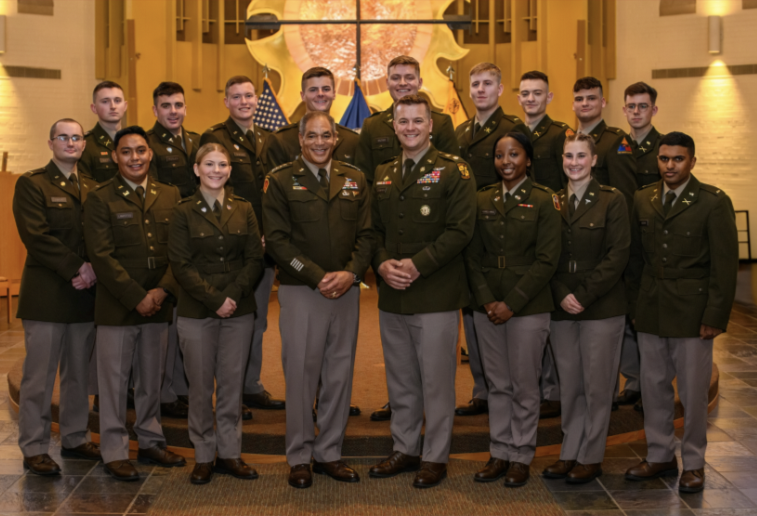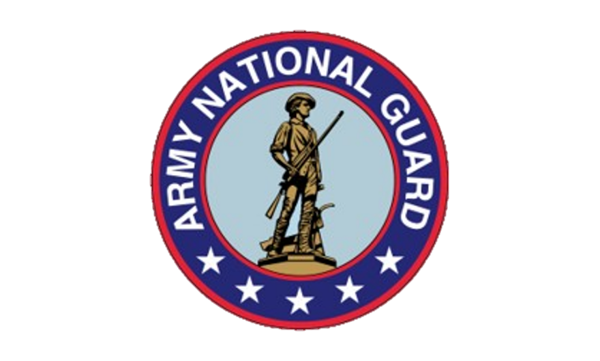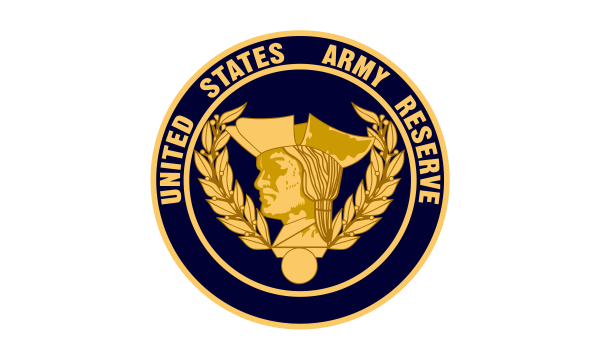

Army ROTC Commissioning: Your Path to Service and Career Options
Becoming an Army officer through Miami University’s ROTC program opens the door to a wide range of career and leadership opportunities. Upon commissioning, officers first choose the component in which they will serve - Active Duty, Army National Guard, or U.S. Army Reserve - allowing them to tailor their service to their personal and professional goals. They also select a branch, the career field in which they will develop specialized skills and lead soldiers. New officers can choose from 17 basic branches, including Infantry, Armor, Aviation, Military Intelligence, Cyber, Logistics, Medical Service, and many more. Each branch offers unique missions, specialized training, and pathways for professional growth, allowing officers to align their interests and talents with the needs of the Army while gaining invaluable leadership experience that carries over into every stage of their military and civilian careers.
Choosing the Right Component
Graduates enter the Army as commissioned officers and have the unique opportunity to choose the component of service that best aligns with their career goals and lifestyle. Whether pursuing a full-time military career, serving part-time while building a civilian profession, or remaining rooted in their local community, cadets can commission into one of three distinct components: Active Duty, the Army National Guard, or the U.S. Army Reserve. Each path offers its own mission focus, training tempo, and benefits, allowing officers to serve the nation in a way that matches their personal aspirations.


Army National Guard

Army Reserves
Choosing the Right Career Path
Choosing the right branch after commissioning is one of the most important decisions a new Army officer will make. Your branch determines the career field in which you will serve, the type of soldiers you will lead, and the missions you will support throughout your military career. With 17 basic branches available -ranging from combat-focused roles like Infantry and Armor to technical specialties like Cyber and Aviation - there is a path for every interest and skill set. Selecting a branch is about finding the best fit for your strengths, passions, and long-term goals while meeting the needs of the Army. Taking the time to explore each option ensures you start your career in a field where you can thrive and make the greatest impact. Open the sections below to find out more.
Infantry Officer (11A)
An Infantry Officer leads ground combat units that engage the enemy directly through fire and maneuver. They are trained in tactics, weapons systems, and leadership to command infantry platoons and companies in offensive, defensive, and stability operations. Infantry Officers serve at the core of Army combat operations and are responsible for mission planning, unit readiness, and the welfare of their Soldiers in both garrison and deployed environments.
Aviation Officer (15A)
A Aviation Officer leads and manages Army aviation units that conduct air mobility, reconnaissance, and attack missions. They are responsible for planning flight operations, coordinating air-ground integration, and ensuring aircraft and crew readiness. Aviation Officers typically pilot helicopters such as the UH-60 Black Hawk, CH-47 Chinook, or AH-64 Apache, and play a crucial role in supporting combat and logistical operations from the air.
Armor Officer (19A)
A Armor Officer commands and leads tank and cavalry units in offensive and reconnaissance operations. They are experts in armored warfare, maneuver tactics, and combined arms operations. Armor Officers coordinate direct fire and mobility assets to close with and destroy the enemy, often serving as platoon leaders, troop commanders, or staff officers in both mechanized and reconnaissance units.
Field Artillery Officer (13A)
A Field Artillery Officer leads units that deliver indirect fire support using cannons, rockets, and missile systems. They plan, coordinate, and execute fire missions to support maneuver units on the battlefield. Field Artillery Officers work closely with Infantry, Armor, and Aviation to synchronize lethal and non-lethal fires, serving in roles such as Fire Direction Officer (FDO), Fire Support Officer (FSO), and battery or battalion leadership.
Air Defense Artillery Officer (14A)
A Air Defense Artillery Officer leads operations that protect forces and assets from aerial threats, including aircraft, drones, and missiles. They plan and manage the employment of air defense systems such as Patriot and Avenger to ensure the security of troops and critical infrastructure. Air Defense Artillery Offices play a vital role in integrated air and missile defense at tactical and strategic levels.
Engineer Officer (12A)
A Engineer Officer leads combat and construction engineering missions that support Army operations. They are responsible for tasks such as building and breaching obstacles, constructing bases and infrastructure, conducting route clearance, and supporting mobility and survivability on the battlefield. Engineer Officers may lead combat engineer platoons or manage large-scale construction and project planning for both combat and humanitarian missions.
Military Police Officer (31A)
A Military Police Officer leads Soldiers in law enforcement, security, and detention operations. They are responsible for maintaining order, protecting personnel and facilities, and supporting mobility and stability operations both in garrison and during deployments. Military Police Officers may serve in roles such as platoon leader, provost marshal staff, or operations officer, contributing to both combat support and community policing missions.
Chemical, Biological, Radiological and Nuclear (CBRN) Officer (74A)
A CBRN Officer leads operations that protect the force from chemical, biological, radiological, and nuclear threats. They develop and implement defense plans, oversee decontamination and detection procedures, and advise commanders on CBRN readiness. CBRN Officers ensure unit survivability in hazardous environments and may also support homeland defense and disaster response missions.
Cyber Operations Officer (17A)
A Cyber Operations Officers lead, plan, and execute cyberspace operations to defend Army networks, conduct offensive cyber missions, and enable information superiority. They manage cyber teams that protect critical information systems, exploit adversary networks, and support Army and joint force missions in the cyber domain. These officers require expertise in computer networks, cybersecurity, and cyber warfare tactics.
Human Resources Officer (42B)
A Human Resources Officer manages personnel support and administrative operations for Army units. They oversee functions such as strength accounting, awards, evaluations, promotions, and casualty reporting. As experts in military personnel systems and policies, Human Resources Officers ensure Soldiers and leaders receive accurate, timely HR support to maintain unit readiness and morale. They often serve as S1 officers at the battalion or brigade level.Financial Management Officer (36A)
A Financial Management Officer is responsible for overseeing the budgeting, accounting, and financial operations that support Army missions. They manage funds, ensure proper resource allocation, and provide financial advice to commanders. Financial Management Officers play a key role in maintaining fiscal accountability and supporting readiness through efficient management of military pay, contracting, and operational budgets.Logistics Officer (90A)
Responsible for planning, coordinating, and executing sustainment operations that support Army missions. They manage supply, transportation, maintenance, and distribution functions to ensure units are properly equipped and mission-ready. As multifunctional logisticians, 90As serve in a wide range of positions from platoon leader to staff officer, providing critical support across all levels of command in both garrison and deployed environments.Signal Corps Officer (25A)
A Signal Corps Officers lead and manage communications and information systems that enable command and control across the battlefield. They are responsible for planning, installing, operating, and maintaining secure voice, data, and video networks to ensure continuous, reliable communication for Army units. Their expertise supports mission command and situational awareness in all operational environments.
Military Intelligence Officer (35A)
A Military Intelligence Officers lead intelligence collection, analysis, and dissemination efforts to provide commanders with timely and accurate information about the enemy, terrain, and civil considerations. They manage human intelligence (HUMINT), signals intelligence (SIGINT), imagery, and other intelligence sources to support planning and decision-making across all levels of operations
Nurse Corps Officer (66A)
Nurse Corps Officers provide professional nursing care and leadership in clinical and operational settings. They manage patient care, lead medical teams, and ensure high-quality healthcare delivery to Soldiers and their families in hospitals, clinics, and deployed environments. Their expertise supports the Army’s overall medical readiness.
Medical Service Officer (70A)
Medical Service Officers lead and manage Army medical units and healthcare systems, ensuring effective delivery of medical care, support, and readiness. They oversee administration, logistics, research, and clinical operations to support the health and welfare of Soldiers and their families in both garrison and deployed environments.
Medical Corps Officer (61A)
Medical Corps Officers are licensed physicians who diagnose, treat, and manage the health of Soldiers and their families. They provide clinical care, lead medical teams, and support operational readiness through preventive medicine, emergency care, and specialized medical services in both garrison and deployed environments.
Dental Corps Officer (62A)
Dental Corps Officers provide comprehensive oral healthcare, including prevention, diagnosis, and treatment of dental diseases and conditions. They lead dental teams and manage dental clinics to ensure the dental readiness and overall health of Soldiers and their families in both garrison and deployed settings.
Biomedical Sciences Corps Officer (65A)
Biomedical Sciences Corps Officers are healthcare professionals specializing in areas such as physical therapy, occupational therapy, dietetics, pharmacy, optometry, and physician assistant roles. They provide specialized clinical care, rehabilitation, and support services that enhance Soldier health, recovery, and operational readiness.
Veterinary Corps Officer (64A)
Veterinary Corps Officers provide veterinary medical care for military working dogs and other animals, oversee food safety and defense, and conduct public health inspections to protect Soldiers’ health. They ensure the safety of the food supply and prevent disease transmission in military operations.
Chaplain Corps Officer (56A)
Chaplain Corps Officers provide spiritual support, religious services, counseling, and moral guidance to Soldiers and their families. They promote resilience, ethical leadership, and morale within the force, serving in garrison, deployment, and combat environments to support the overall well-being of the Army community.
Psychological Operations Officer (37A)
Psychological Operations Officers plan and execute information operations aimed at influencing the behavior and decision-making of adversaries, populations, and friendly forces. They develop and deliver tailored messaging and campaigns to support military objectives and shape the operational environment.
Civil Affairs Officer (38A)
Civil Affairs Officers coordinate between military forces and civilian populations to support mission success. They manage relationships with local governments, organizations, and communities to facilitate stability, governance, and humanitarian assistance during military operations.
Judge Advocate General’s (JAG) Corps Officers (27A)
JAG Officers provide legal advice and services to commanders and Soldiers, covering military justice, operational law, and administrative law. They prosecute and defend in courts-martial, offer legal assistance, and ensure compliance with the law in Army operations.
Explosive Ordnance Disposal (EOD) Officer (89A)
An Army EOD Officer is a specialized officer within the Ordnance Corps (89A) branch trained to detect, identify, render safe, recover, and dispose of explosive threats such as unexploded ordnance, improvised explosive devices (IEDs), and chemical, biological, radiological, and nuclear (CBRN) hazards.
Service Obligation Requirements
Upon commissioning through Army ROTC, cadets incur an eight-year total service obligation. This typically includes four years of Active Duty followed by four years in the Individual Ready Reserve (IRR) or a Reserve Component (Army Reserve or National Guard). Cadets commissioned into a Reserve Component generally serve six years in a drilling status and two years in the IRR. Additionally, cadets may voluntarily accept Active Duty Service Obligations (ADSOs), each adding three years of active duty, in exchange for benefits such as receiving their preferred branch, duty station, or graduate school opportunity.
Scholarship vs. Non-Scholarship Service Obligations
Scholarship cadets, who receive 2, 3, or 4 year ROTC scholarships, are required to serve 4 years on Active Duty and 4 years in the Individual Ready Reserve (IRR) if selected for Active Duty, or 6 years in a drilling Reserve/National Guard unit and 2 years in the IRR if selected for a Reserve Component. This commitment is made when funding is accepted.
Non-Scholarhsip cadets are required to serve 3 years years on Active Duty and 4 years in the Individual Ready Reserve (IRR) if selected for Active Duty, or 6 years in a drilling Reserve/National Guard unit and 2 years in the IRR if selected for a Reserve Component. This commitment is made when the contract.
Branch Detail Service Obligation (BDSO)
A Branch Detail Service Obligation (BDSO) is a commitment required when a newly commissioned officer is assigned to a Branch Detail, which is a temporary assignment to a different branch, usually a combat arms branch, before transitioning to their designated career branch, such as Military Intelligence or Signal. Officers typically serve 3 to 4 years in the detail branch before transferring. The BDSO does not add extra time beyond the standard service obligation but dictates the initial years of branch assignment. It is determined by Army needs and may be accepted voluntarily or assigned.
Branch of Choice Service Obligation (BRADSO)
A Branch of Choice Service Obligation (BRADSO) for ROTC cadets is a voluntary commitment to serve an additional three years of Active Duty if granted their preferred branch of service. By accepting a Branch ADSO during their senior year, cadets improve their chances of receiving a highly competitive or desired branch. If the cadet does not receive their preferred branch, the ADSO is typically voided and no extra service time is required.
Graduate School Service Obligation (GRADSO)
A Graduate School Service Obligation (GRADSO) is a voluntary agreement ROTC cadets can accept to attend Army-funded civilian graduate school. In exchange, they commit to serve an additional three years of Active Duty after completing their graduate degree. This ADSO applies once the cadet finishes the program and begins active service.
Post Service Obligation (Post ADSO)
A Post Active Duty Service Obligation (Post ADSO) is a voluntary agreement ROTC cadets can accept to serve an additional three years of Active Duty if they are assigned to their preferred duty station or post after commissioning. By accepting a Post ADSO, cadets improve their chances of being stationed at a specific location they request. If the requested post is not granted, the ADSO does not apply and no extra service time is added.
Army ROTC
102 Boyd Hall | 551 Western College Drive | 513-529-3527
APMS Vacant
102A Boyd Hall
MSG Jacob Hill
102B Boyd Hall
513-635-8049
Contractor Vacant
102C Boyd Hall
SFC Ashley Patti
OH ARNG Recruiter
102D Boyd Hall
513-288-3983